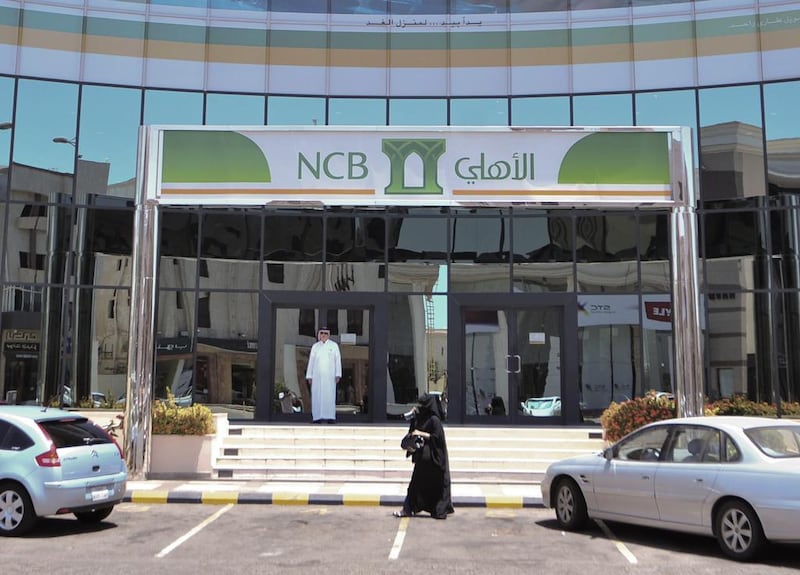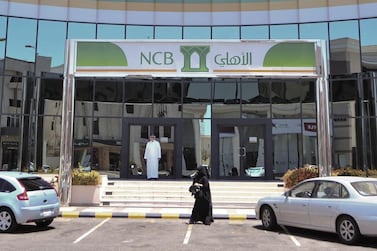Bank of America upgraded its recommendation on Saudi Arabia's largest lender, National Commercial Bank, from 'underperform' to 'buy' following the lender's announcement of a potential tie-up with Samba Financial Group late last week
BofA analysts said that a combination of the kingdom's biggest lender, NCB, with the fourth-biggest, Samba, "could (conservatively) be 7-10 per cent accretive to NCB earnings by the end of 2022", assuming cost synergies of about 10 per cent for the combined organisation, but no revenue synergies.
“We believe the merger harbours sound strategic rationale given it could yield significant revenue and cost synergies, make better usage of Samba's underutilised balance sheet and liquidity, and afford greater scale to fund mega-projects,” the analysts said in a note on Tuesday.
The combined entity would be the third-largest in the Mena (Middle East, Nort Africa) region and the deal would “further extend” NCB's lead as the largest bank in the country, with the combined entity having total assets of approximately $215 billion (Dh789.5bn), according to the note.
Currently, NCB has a 21 per cent share of the market and Samba has an 11 per cent share.
Last week, the two lenders said they were working on a merger in which NCB would be the merging bank and Samba Financial the merged lender. The terms agreed will see Samba shareholders receive between 0.736 and 0.787 newly-issued shares of NCB in exchange for each Samba share they hold.
BofA also sees significant scope for cost reductions following the merger and help in increasing NCB's earnings.
“NCB and Samba have slightly different business mixes, with Samba being more focussed on the corporate and treasury markets while NCB has a larger allocation to the retail banking market than Samba. Still, there is a significant overlap which, in our view, provides scope for significant cost savings.”
“On our estimates, a 10 per cent reduction in the combined cost bases could see the deal becoming 7-10 per cent accretive to earnings by the end of 2022 (assuming [the] deal is completed in second half of 2020 and banks fully combine by [the] end of [the] first half of 2022). Higher cost savings would obviously add upside to this assessment, as would the addition of revenue synergies.”
BofA also noted that Samba has been a latecomer to the high-margin Saudi mortgage market, where NCB is the second-biggest player and the merger could “help Samba's balance sheet get up the lending curve more quickly”.
“Ultimately, this could yield revenue synergies and high grading of returns.”







